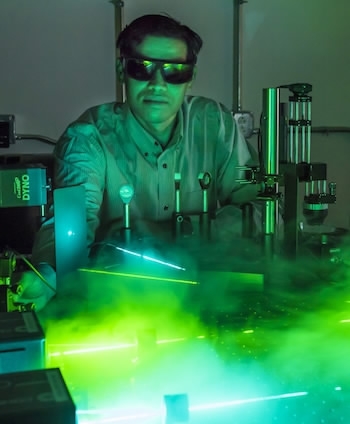A researcher at Rice University in the US state of Texas has found a way to "upconvert" light, which may make solar cells more efficient and disease-targeting nanoparticles more effective.
Gururaj Naik, an assistant professor of electrical and computer engineering, led the experiments that combined plasmonic metals and semiconducting quantum wells to boost the frequency of light, changing its color, according to a news release published on Monday by Rice University.

Gururaj Naik conducts his experiment. /rice.edu
In a nanoscale prototype Naik developed as a postdoctoral researcher at Stanford University, custom-designed pylons that were struck by green light produced a higher-energy blue glow.
Efficient upconversion of light could let solar cells turn otherwise-wasted infrared sunlight into electricity or help light-activated nanoparticles treat diseased cells, Naik said.
Naik's work at Stanford was inspired by the groundbreaking work of professors Naomi Halas and Peter Nordlander at Rice's Laboratory for Nanophotonics.

Gururaj Naik, a researcher in Rice University. /rice.edu
"Plasmonics is really great at squeezing light on the nanoscale,” said Naik. “But that always comes at the cost of something. Halas and Nordlander showed you can extract the optical losses in the form of electricity. My idea was to put them back to optical form.”
(Source: Xinhua)










